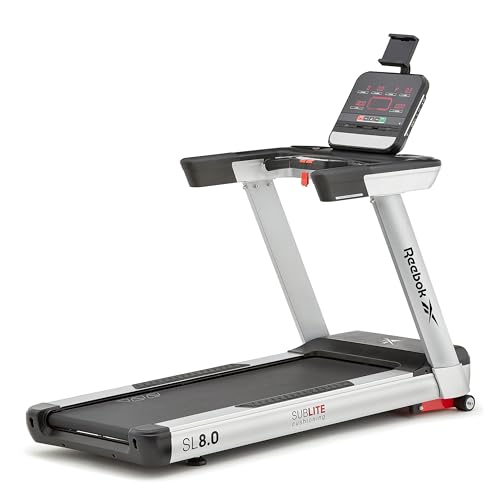The Benefits of Using a Treadmill for Walking: Your Ultimate Guide
In a period where inactive lifestyles have actually become more typical, finding ways to incorporate physical activity can substantially benefit general health. Walking, considered among Best Self Powered Treadmill of workout, offers a myriad of health benefits. Integrating this with a treadmill can make it even easier for people to keep a routine walking routine, regardless of the weather exterior. This blog site post will look into the benefits of utilizing a treadmill for walking, compare various types, and respond to some often asked concerns-- all intended to help readers make notified decisions.
The Advantages of Walking on a Treadmill
1. Convenience and Accessibility
Among the most significant benefits of a treadmill is the convenience it uses. With one in your house, there is no need to venture out in inclement weather or find a safe walking route.
2. Controlled Environment
Treadmills supply a regulated walking environment that permits users to set their speed, incline, and duration. This makes sure a tailored exercise that satisfies private fitness goals and needs.
3. Low-Impact Exercise
Compared to running or jogging, walking is a low-impact workout that is much easier on the joints. Treadmills frequently have cushioned belts to further decrease impact stress.
4. Health Benefits
Walking has numerous health advantages, consisting of improved cardiovascular health, improved mood, better weight management, and increased longevity. Incorporating routine walking on a treadmill can enhance these benefits.
5. Multi-tasking Opportunities
While walking on a treadmill, it's possible to take part in other activities such as reading, watching television, or listening to music. This makes exercises more satisfying and can encourage consistency.
6. Hazard Removal
Utilizing a treadmill removes threats associated with outdoor walking, such as uneven terrain, traffic, and other ecological threats.
Kinds of Treadmills: A Comparison Table
Selecting the ideal treadmill can significantly affect the walking experience. Below is a comparison table of various types:
| Treadmill Type | Description | Pros | Cons |
|---|---|---|---|
| Manual Treadmills | Requires physical effort to move the belt. | Usually less expensive; no electricity needed. | No automatic incline or speed modifications. |
| Electric Treadmills | Powered by electricity; adjustable speeds and slopes. | Versatile; easy to use; frequently consists of extra features. | Can be more pricey; needs an outlet. |
| Folding Treadmills | Created for easy storage and saving space. | Space-efficient; practical for home use. | Might have a smaller sized running surface. |
| Industrial Treadmills | Heavier, built for frequent usage in fitness centers. | Resilient; typically loaded with functions and programs. | Can be extremely expensive. |
How to Get Started with Walking on a Treadmill
If you're brand-new to walking on a treadmill, think about the following steps to create a safe and reliable routine:
Step 1: Set Your Goals
Determine your walking goals, whether they are weight-loss, improved endurance, or just an increased daily activity level.
Action 2: Learn the Controls
Acquaint yourself with the treadmill's control panel. Understand how to adjust speed, incline, and how to use any extra functions it may have (heart rate screen, workout programs, and so on).
Action 3: Warm-Up
Start each walking session with a 5-minute warm-up at a slower pace to prevent injury.
Step 4: Start Slow
Begin with low-intensity walking sessions 2 to 3 times a week, slowly increasing your period and strength.
Step 5: Incorporate Incline
As your physical fitness improves, consider including an incline into your regular to increase intensity and work various muscle groups.
Action 6: Cool Down
Conclude your workout with a 5-minute cool-down at a slower rate to assist your body recuperate.
Regularly Asked Questions (FAQs)
1. How long should I walk on a treadmill for health benefits?
The CDC suggests at least 150 minutes of moderate aerobic activity, like vigorous walking, every week. This translates to about 30 minutes a day, five times a week.
2. Is walking on a treadmill better than walking outdoors?
Both offer benefits, but a treadmill permits a controlled environment, which may fit some individuals better, particularly in varying weather.
3. Can I lose weight by walking on a treadmill?
Yes, walking can add to weight reduction when combined with a healthy diet plan. It's vital to keep consistency and gradually increase intensity.
4. What speed should I walk on a treadmill?
For novices, a speed of 3-4 mph is considered a vigorous walk. As endurance enhances, people can adjust their speed according to their physical fitness objectives.
5. How can I remain encouraged while walking on a treadmill?
Listening to music, enjoying television shows, or even joining virtual walking communities can assist keep motivation levels high.
Incorporating a treadmill into a walking routine can offer tremendous benefits, making workout accessible and reliable. With numerous types of treadmills offered, individuals can pick one that best fits their needs and choices. By setting reasonable goals and planning out regular exercises, users can experience the myriad health benefits that come with walking. Remember to listen to your body, consider a mix of slopes and speeds, and most significantly, take pleasure in the process. Walking on a treadmill is not simply workout; it's a step towards a healthier lifestyle.

